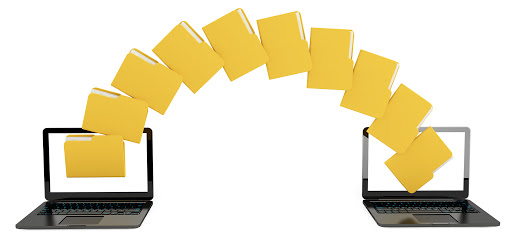Think about the last time you used a physical storage medium like a CD or a flash drive to share files. For most of us, it’s been a long time. Gone are the days when we needed floppy disks or zip drives to save data or load programs. It is all thanks to the internet cloud-based file sharing. With blazing-fast WiFi and dedicated solutions like Dropbox, you can upload and download massive files such as videos, and movies, etc. in minutes.
But one issue remains in the file-sharing world — security. Unfortunately, with any internet-enabled device, there will always be the threat of cyber criminals trying to get their hands on your data. There’s no need to go back to the stone age of data transfer and use outdated storage methods. Instead, learn about secure and private file sharing with these eight tips.
Best Tips and Free Tools for Secure File Sharing in 2024

1) Use Encryption
Encryption is the process of turning your data into an indecipherable code. If you’ve used secure encryption, you can pretty much guarantee that nobody will access your files unless you give them the passcode.
Regardless of whether you share via Dropbox, Google Drive, or through FTP channels, use business encryption software like NordLocker to keep your files safe. You should also use it for any data you store locally for added protection.
2) Don’t Send Files Via Email
Most people don’t realize that email is vulnerable by design. Even if you manage to use secure email protocols, there are many different ways unauthorized parties can intercept your messages and files.
Every time you send an email, four copies are created. There is the one in your outbox, one in the sending mail server, one in the receiver’s server, and the received inbox copy. That increases your exposure four-fold.
Simply put, emails don’t offer enough security for file transfer. Hackers can intercept files in transit. Or they can attack files sitting on servers. Instead, send data via different channels.
3) Use Encrypted Messaging Apps
You might not realize this, but many messaging apps like WhatsApp, Signal, and Telegram support file transfers. And since they use end-to-end encryption, it makes them a great way to send files securely.
Different messaging apps support different file sizes, so be sure to check beforehand. On average, you can send files that are between 100MB and 1GB in size.
Don’t use Facebook Messenger, though. It is by far the least secure messaging app. Sending via Messenger puts your data at even more risk.
4) Create Complex Passwords
It is a general cybersecurity tip that you should follow across all your digital activities. Hackers have a wide variety of tools to either brute-force attack or discover passwords by other means.
However, complex passwords are much tougher to crack. Apply these strategies to both your online accounts and to passwords you use to lock files:
- Longer is better. Aim for at least 16 characters.
- Make it a random string of numbers and letters.
- Combine upper and lowercase letters as well as special characters.
- Create unique passwords for each account and file.
A common mistake is using the same password across all accounts. What’s the problem? If one site suffers a data breach or your password becomes exposed in another way, hackers can get into all your accounts.
5) Use a Password Manager
If you’re wondering how you would ever remember so many complex passwords, the answer is simple — use a password manager. Password managers help you create, store, and manage these complex credentials.
They’re not only a great way to safeguard your accounts, but you can also use them for secure sharing of notes or file passwords.
6) Don’t Use USB
The best USB flash drives can now hold over 2TB of data and write at up to 300MBs per second. They’ve come a long way in the last twenty years.
But USB flash drives still suffer the same problems. They’re not that secure. It’s so easy to lose one of the drives. And you never know who will get their hands on them.
Likewise, hackers often infect USB drives with malware that can harm your computer. Stay safe and avoid this storage format whenever possible.
7) Scan All Files Before Opening Them
You never know what a file may contain. Hackers are so talented at disguising malware that they can even infect Word files.
No matter the sender, any time you receive a file, you need to scan it before opening. The scan will tell you whether it’s safe or contains anything dangerous.
Apply the same logic to any links you click on too. Links and downloads are the most common ways hackers deliver malware. Scanning files and links is the easiest way to prevent device infection.
8) Set Time Limits and Restrict Permissions
Always set a time on files no matter what they contain and who you send them to. That’s because you never know what could happen. For example, let’s say you send a file to a colleague. If someone breaches their device, your data will be put at risk. Take advantage of file permissions, time limits, and other tools to monitor and regulate access.
Cloud file sharing makes transferring data so much more convenient. It’s not only a great way to share vital resources but also to collaborate on projects and work towards company goals.
Secure and private files sharing is a breeze too. Follow these essential tips, and you will ensure the safety of your data at all times.
SEE ALSO: 10+ Best Video Downloader Apps for Android & YouTube
















